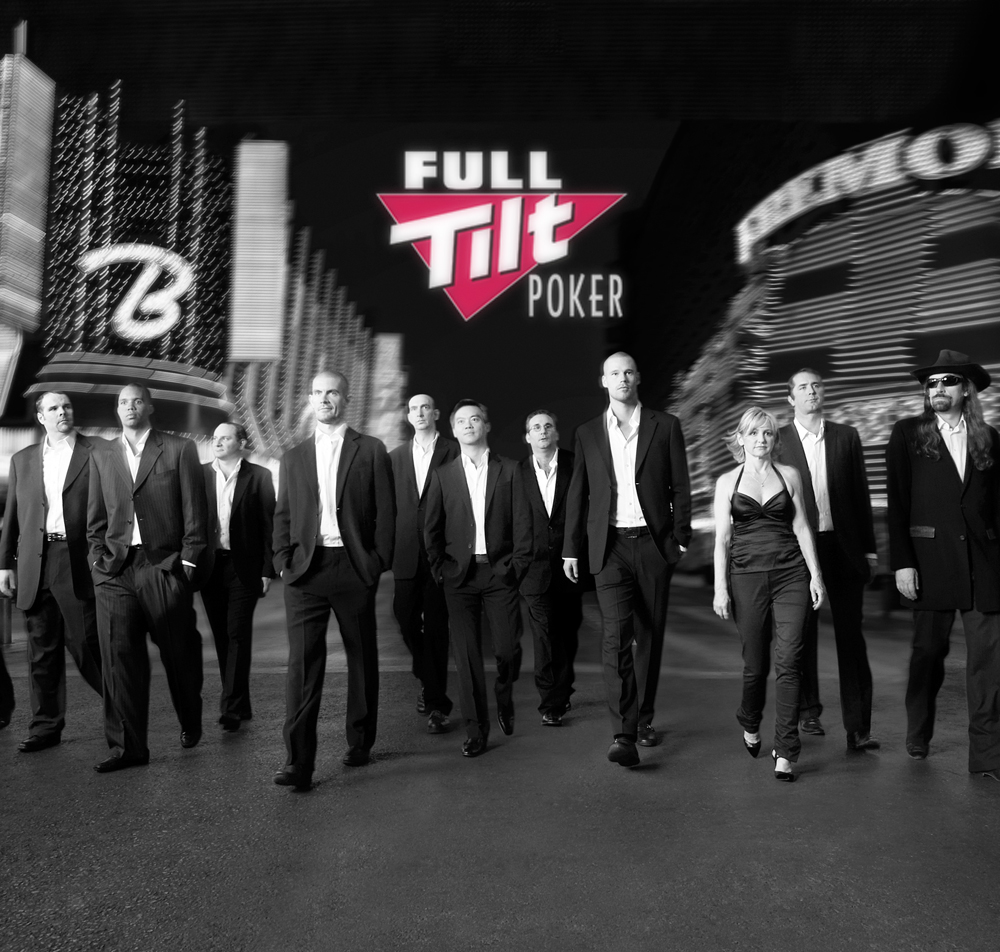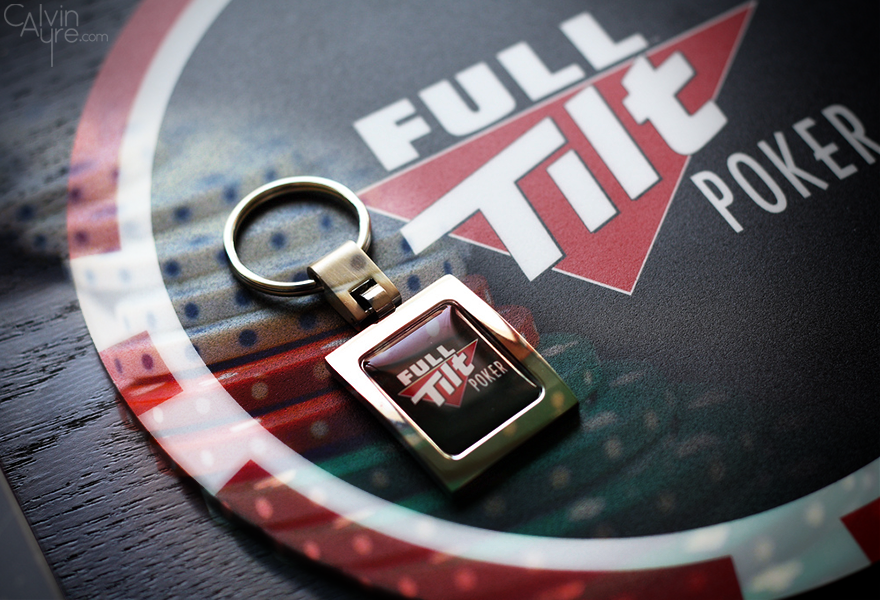After a long and winding road of legal bullshit, Full Tilt Poker came back from the dead this Tuesday (Nov. 6th).
THE SAME OLD PLACE
In some ways – especially if you’re good at blocking out painful memories like a year-and-a-half absence from the market – it’s like Full Tilt never went away. Logging in and sitting at the tables, you quickly realize that this is the exact same poker room you used to play at, barring the possibility of changes so minor you didn’t even notice them.
All the old innovations are back. The big one, of course, is Rush Poker. These days it seems like every other poker room has some sort of blazing-speed variety that allows player to cram more hands in every hour, but Rush is the original and it still plays just as smoothly as it used to. The old mixed game formats that used to be so much fun to follow at the highest stakes are still there, too, including the 10-game mix that once drew the world’s top pros to its tables; like Rush, it’s also been matched online since FTP’s departure from the market. There are also the weirder varieties of games that Full Tilt concocted over the years, like Matrix sit-and-go tournaments, that appeal to niches of the community.
 The old marketing scheme is also back. The stark black-and-white imagery of old is still prevalent on the Full Tilt website, and there’s a stable of pros who play on the site and will be happy to take your money if you can afford to sit with them. Full Tilt built its reputation in the early days as being the place where the pros played, making players like Phil Ivey, Jennifer Harman, and Gus Hansen into celebrities through memorable advertising campaigns. Only Hansen remains from the original big names, joined by latter-day Team Full Tilt member Tom “durrrr” Dwan and former Team PokerStars Pro Viktor “Isildur1” Blom.
The old marketing scheme is also back. The stark black-and-white imagery of old is still prevalent on the Full Tilt website, and there’s a stable of pros who play on the site and will be happy to take your money if you can afford to sit with them. Full Tilt built its reputation in the early days as being the place where the pros played, making players like Phil Ivey, Jennifer Harman, and Gus Hansen into celebrities through memorable advertising campaigns. Only Hansen remains from the original big names, joined by latter-day Team Full Tilt member Tom “durrrr” Dwan and former Team PokerStars Pro Viktor “Isildur1” Blom.
The one thing that’s probably not going to be back right away is the traffic. Full Tilt was far and away the number two online poker room, coming in behind only industry titan (and new Full Tilt owner) PokerStars, with much of its volume coming thanks to a huge American player base. That’s obviously no longer around, to the chagrin of not just the American players who still don’t have their money back but also a worldwide population that has had a lot of time to improve its game. Those players would love to dine on a daily meal of juicy American fish but don’t have the chance to do it. It’s easy to see scenarios where FTP regains a good chunk of its old market share, but it’s also easy to envision players simply opting to continue playing at their sites of choice from the last year and a half.
EASY DOES IT
 I always felt like Full Tilt had the best software in the business. Even if it might have been matched on some fronts over the years by its competitors, the total package at Full Tilt was better than anyone else’s. (No surprise given that Chris Ferguson, who designed the software, was known a computer science Ph.D. before he gained fame as a poker player.) From the get-go Full Tilt was all about innovation and that paid off in features that are sometimes taken for granted these days: it might not have necessarily been the first to allow mass multi-tabling, resizable windows, and software that runs on a Mac without having to use virtualization, but it made those features standard and improved their stability to the point where players expected them from the competition.
I always felt like Full Tilt had the best software in the business. Even if it might have been matched on some fronts over the years by its competitors, the total package at Full Tilt was better than anyone else’s. (No surprise given that Chris Ferguson, who designed the software, was known a computer science Ph.D. before he gained fame as a poker player.) From the get-go Full Tilt was all about innovation and that paid off in features that are sometimes taken for granted these days: it might not have necessarily been the first to allow mass multi-tabling, resizable windows, and software that runs on a Mac without having to use virtualization, but it made those features standard and improved their stability to the point where players expected them from the competition.
Though I can only access play-money games here in the land of the free, I popped online today and from the very first hand of (fake) poker I played I felt like I’d been reunited with an old friend. Hitting the quick-fold button at a Rush Poker table, signing up automatically for multiple sit-and-gos from the lobby of the first, and most of all hitting the red cashier button for a look at my account, were all like traveling back in time. Every preference in the software is easy to get to and adjust, and every action I took was performed without delay. I thought about the choices that have been available to me since Full Tilt closed, and not one them was anything more than subpar by comparison. When it comes to ease of use, players had it good when they were playing on Full Tilt. It’s good to see that return.
A FRUSTRATED MESS
 Still, when I think about the relaunch of Full Tilt Poker, I have to admit that I’m of mixed feelings. On the one hand there’s all the headache that the room’s former management caused to the poker community, which is pretty much impossible to forget. Every time I look at the Full Tilt logo I’m reminded that, even if they weren’t exactly running the Ponzi scheme they were accused of by a government hack looking to bolster his political career, the guys making the decisions at the top were cheaters. That a guy like Howard Lederer is allowed to show his face in public, much less play with other high-rollers at Bellagio, is a plain-and-simple embarrassment.
Still, when I think about the relaunch of Full Tilt Poker, I have to admit that I’m of mixed feelings. On the one hand there’s all the headache that the room’s former management caused to the poker community, which is pretty much impossible to forget. Every time I look at the Full Tilt logo I’m reminded that, even if they weren’t exactly running the Ponzi scheme they were accused of by a government hack looking to bolster his political career, the guys making the decisions at the top were cheaters. That a guy like Howard Lederer is allowed to show his face in public, much less play with other high-rollers at Bellagio, is a plain-and-simple embarrassment.
On the other hand, the relaunch signals the beginning of the end for the fallout from Black Friday – at least from the consumer’s point of view. All those international players who had money tied up in the site for far too long are now back at the tables, check-raising tourists like it’s the Chesterfield South; it’s hard to imagine that it will too long before they’re back to playing a new FTOPS, continuing the tradition of one of online poker’s toughest and most respected tournament series. And for Americans with money tied up at FTP there will likely be some sort of resolution forthcoming, even if it does come in the chains of an arbitrary DOJ process that hasn’t yet been spelled out.
Whatever resolution comes about will be pretty far from ideal. But at least some Americans will be back playing poker online again in the relatively near future, and that’s good for not just those.
